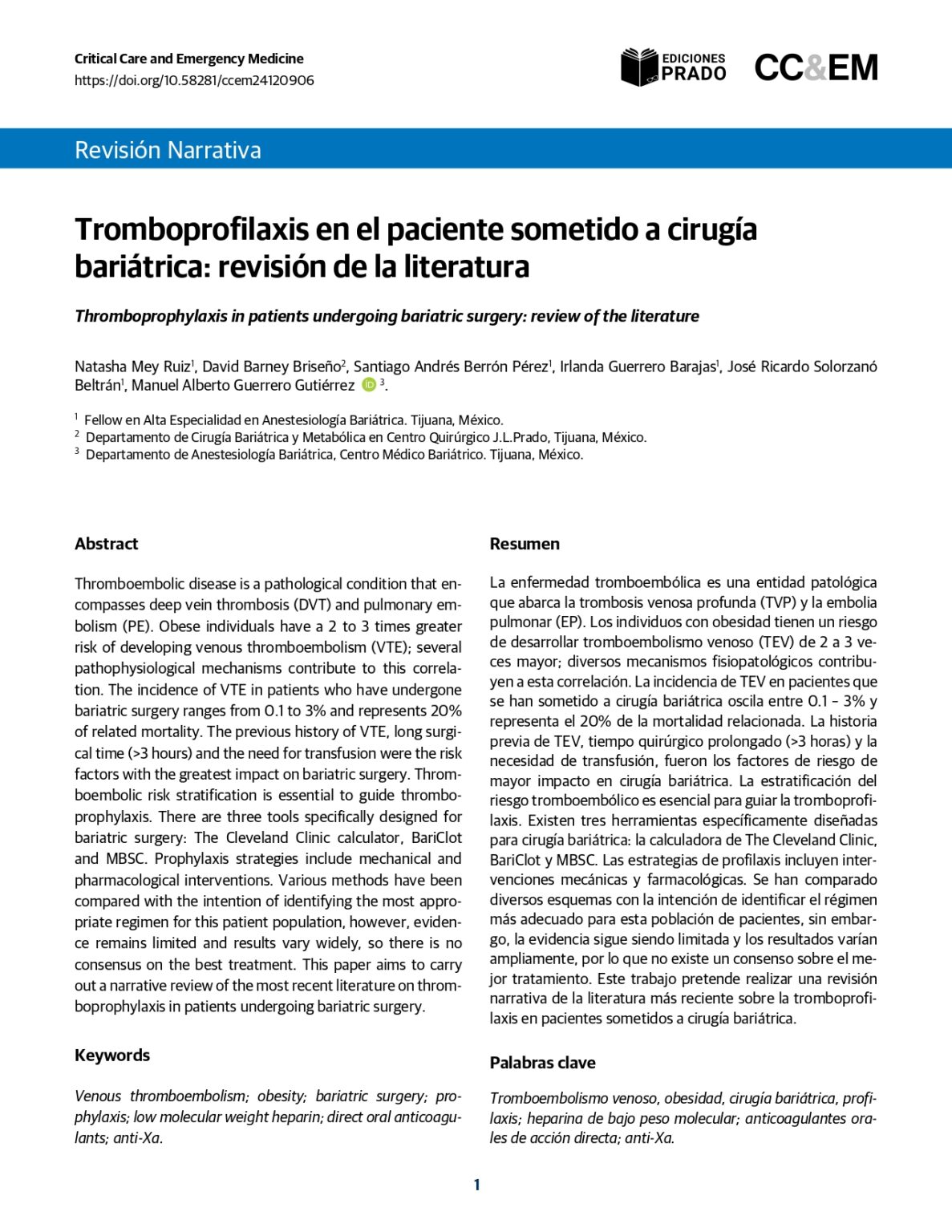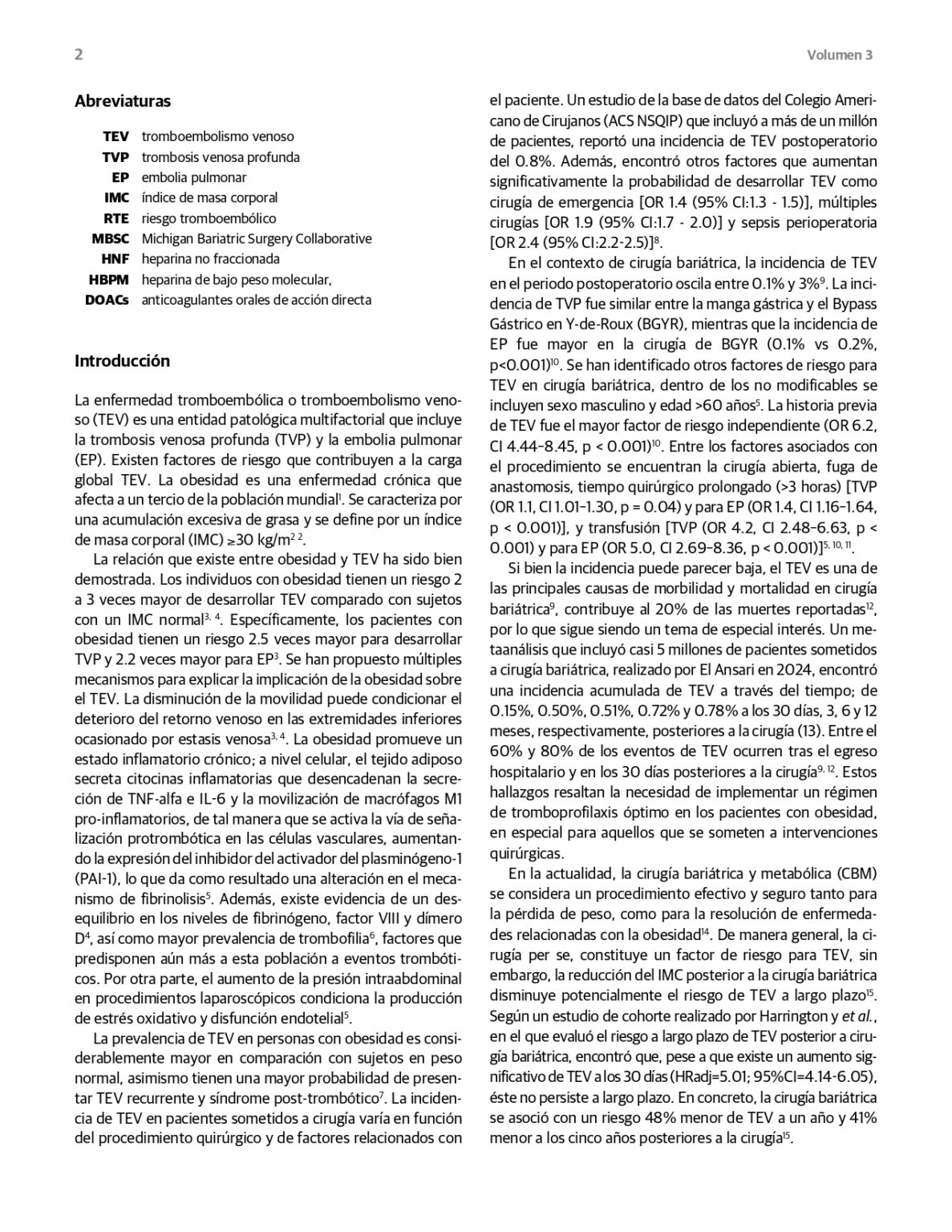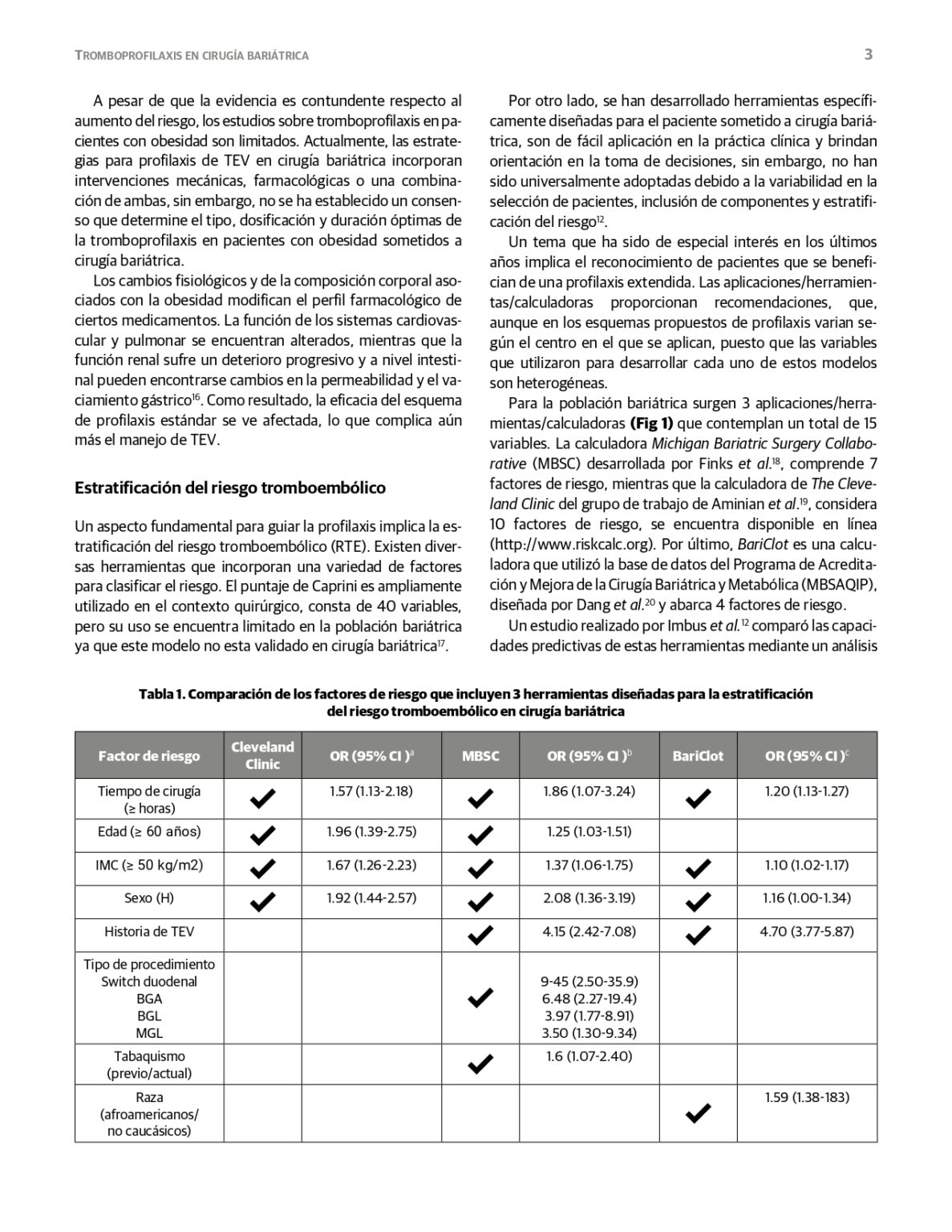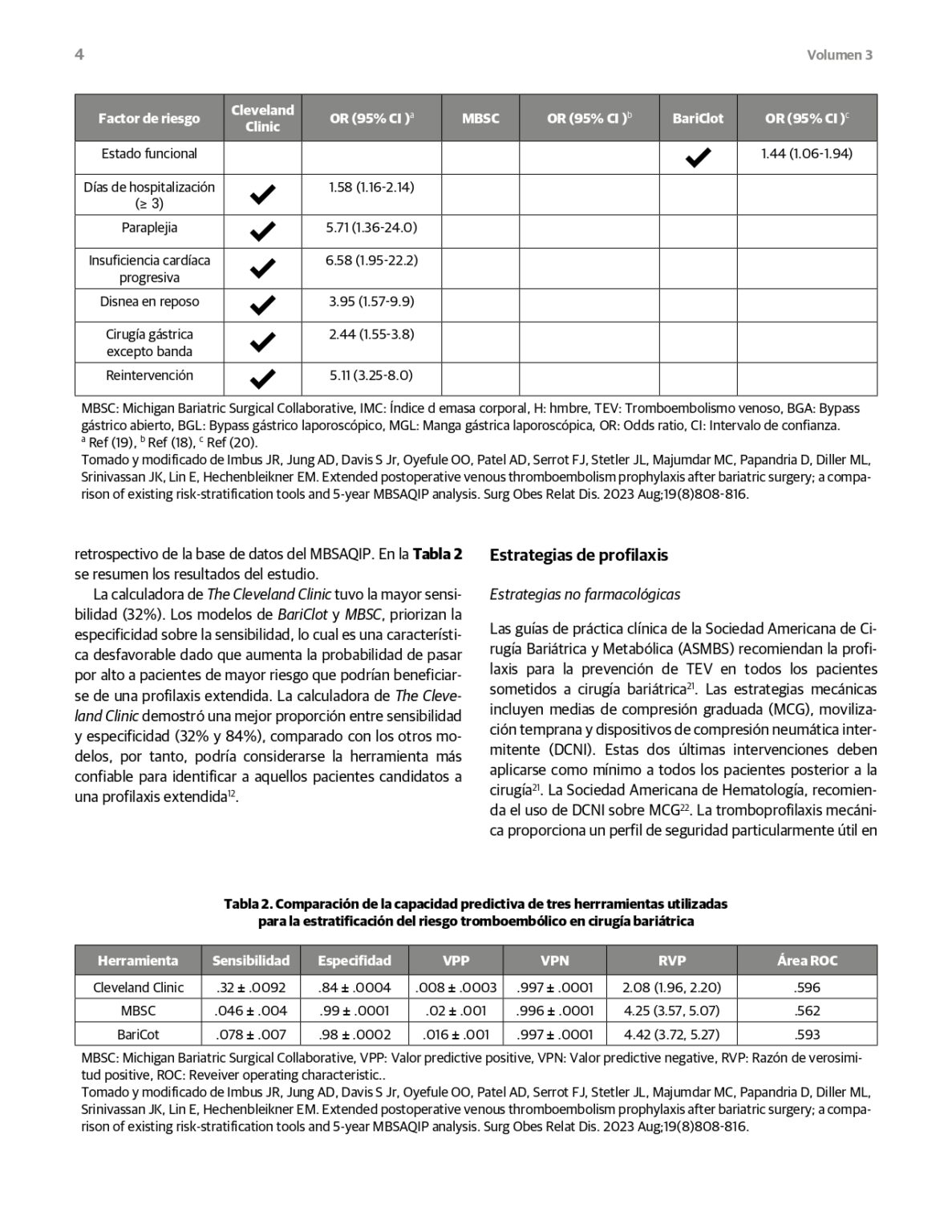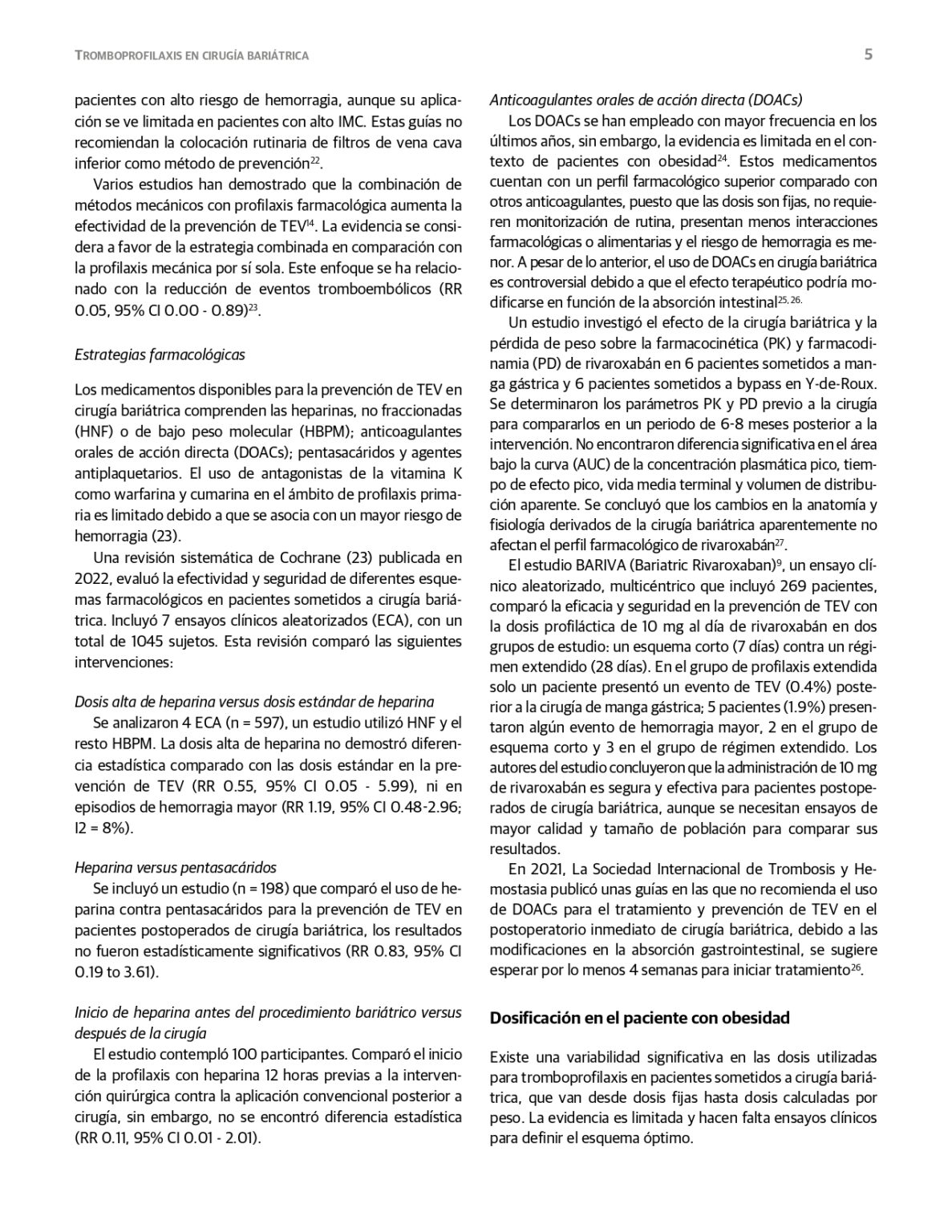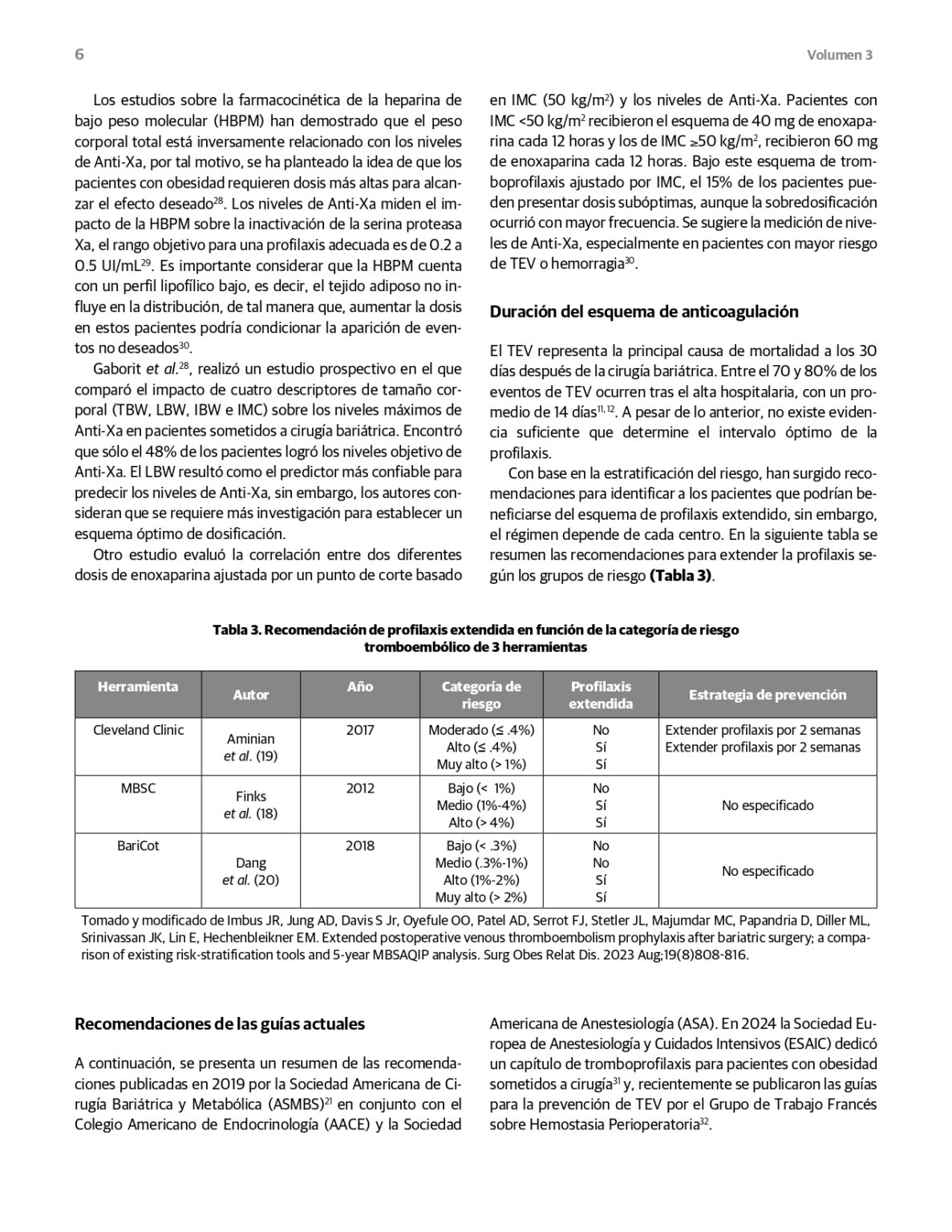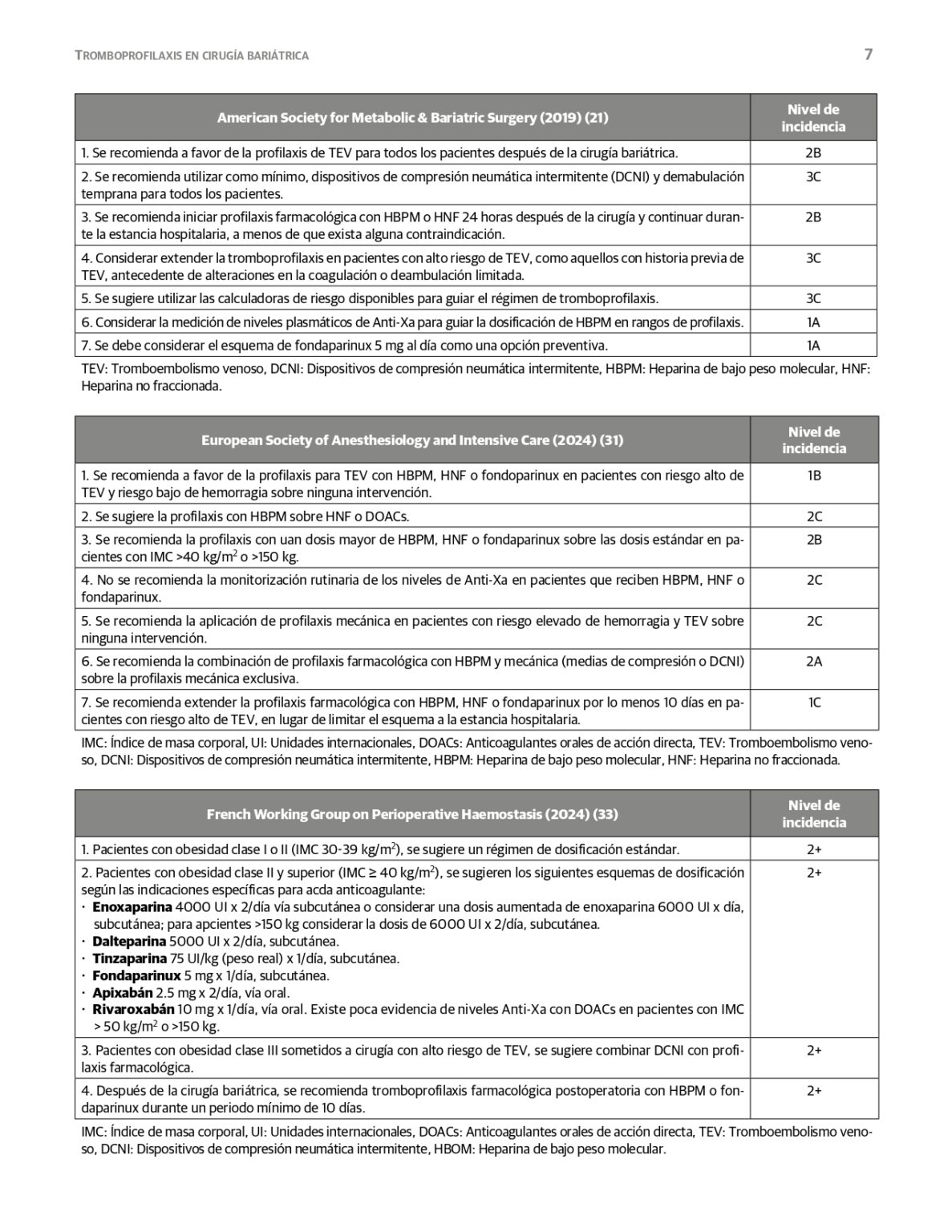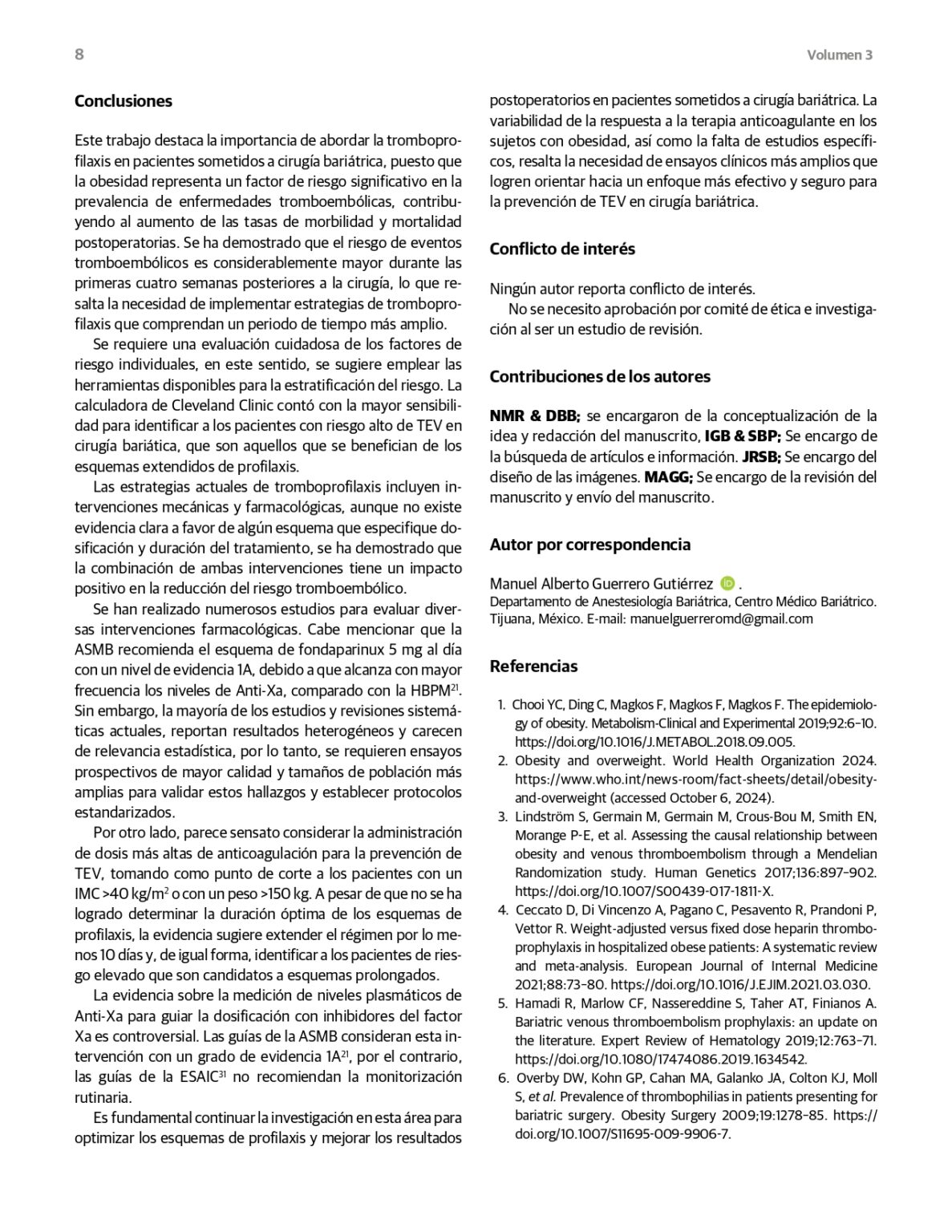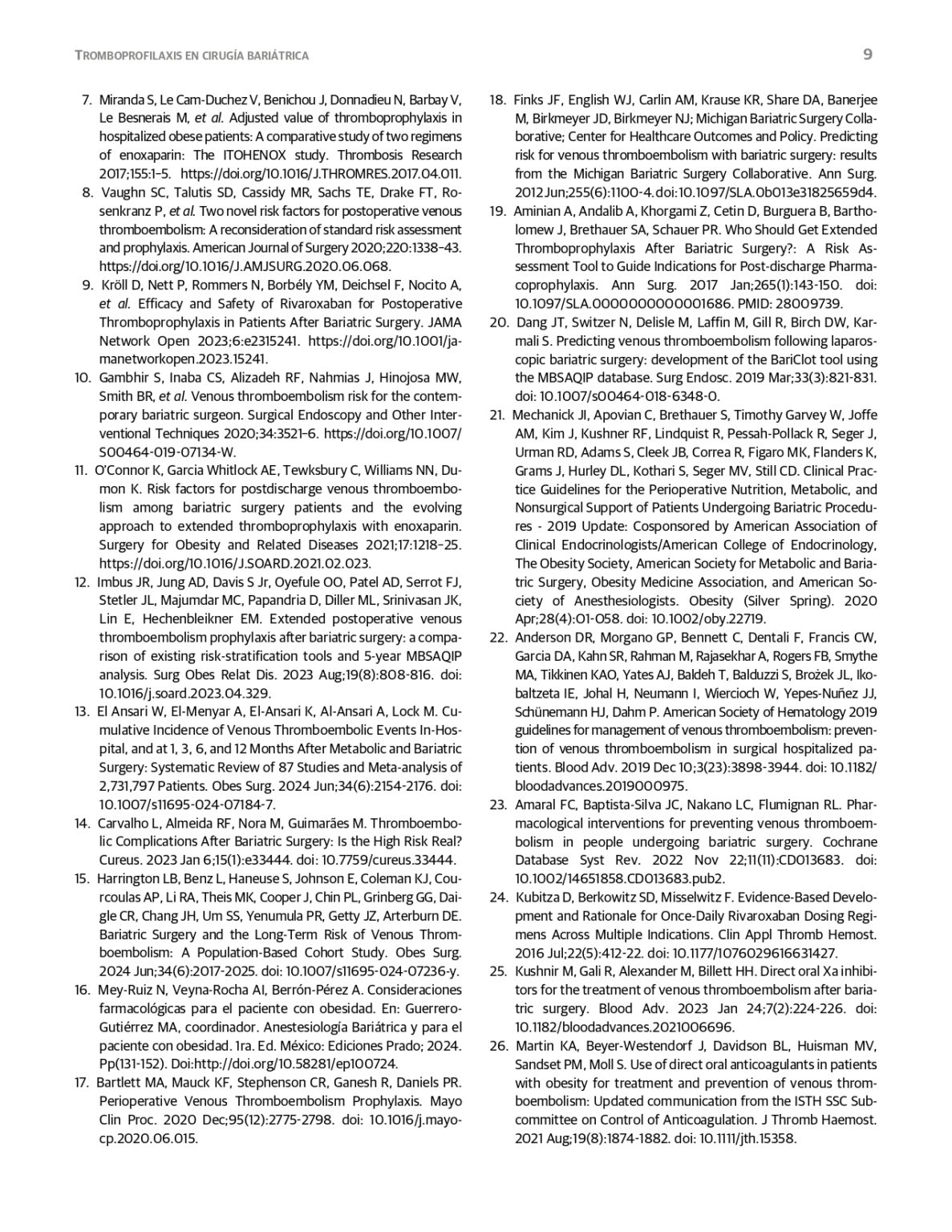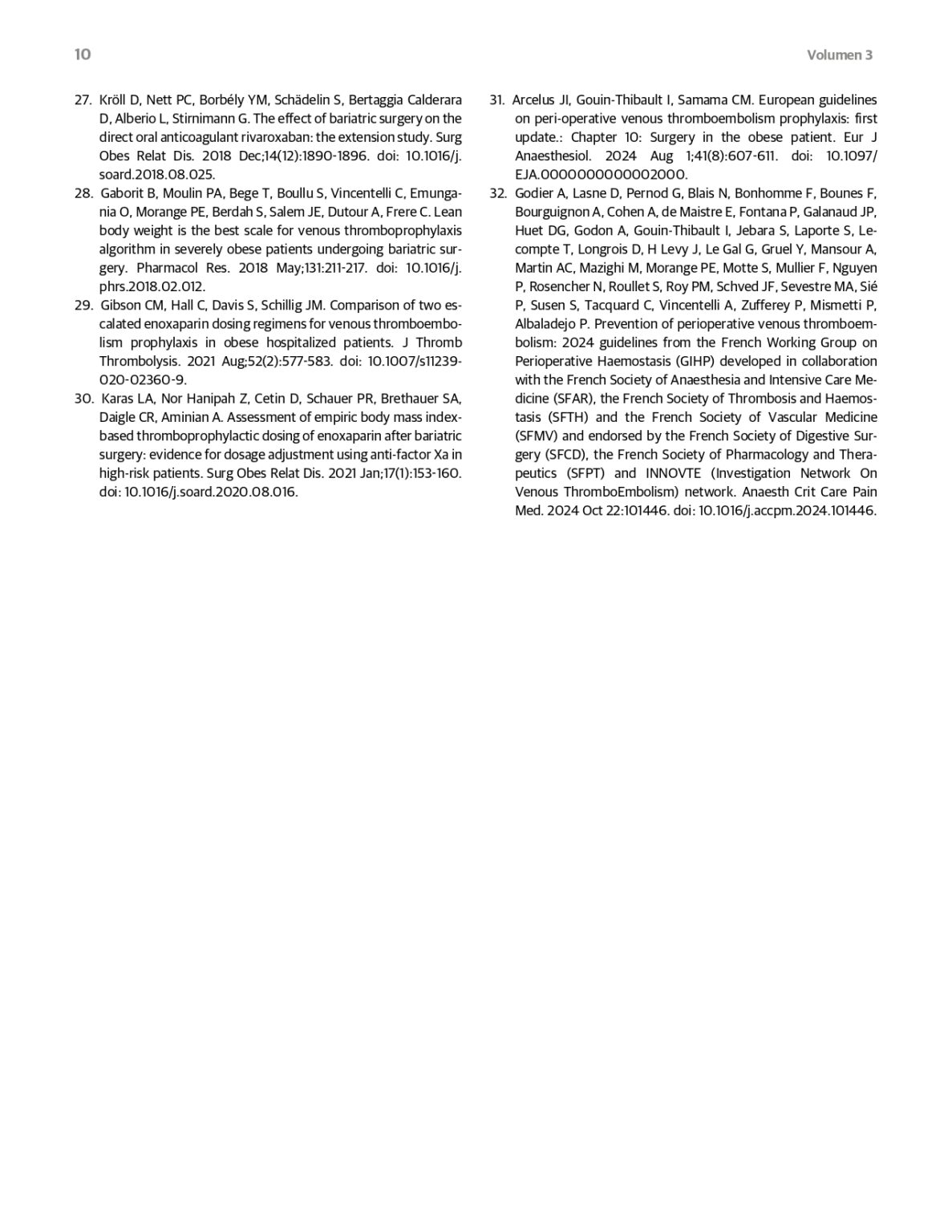Tromboprofilaxis en el paciente sometido a cirugía bariátrica: revisión de la literatura
https://doi.org/10.58281/ccem24120906
09/12/2024
Management of Acute Myocardial Infarction with ST Segment Elevation. Narrative Review
Natasha Mey Ruiz 1, David Barney Briseño 2, Santiago Andrés Berrón Pérez 1, Irlanda Guerrero Barajas 1, José Ricardo Solorzanó Beltrán 1, Manuel Alberto Guerrero Gutiérrez 3.
1 Fellow en Alta Especialidad en Anestesiología Bariátrica. Tijuana, México.
2 Departamento de Cirugía Bariátrica y Metabólica en Centro Quirúrgico J.L.Prado, Tijuana, México.
3 Departamento de Anestesiología Bariátrica, Centro Médico Bariátrico. Tijuana, México.
RESUMEN
La enfermedad tromboembólica es una entidad patológica que abarca la trombosis venosa profunda (TVP) y la embolia pulmonar (EP). Los individuos con obesidad tienen un riesgo de desarrollar tromboembolismo venoso (TEV) de 2 a 3 veces mayor; diversos mecanismos fisiopatológicos contribuyen a esta correlación. La incidencia de TEV en pacientes que se han sometido a cirugía bariátrica oscila entre 0.1 – 3% y representa el 20% de la mortalidad relacionada. La historia previa de TEV, tiempo quirúrgico prolongado (>3 horas) y la necesidad de transfusión, fueron los factores de riesgo de mayor impacto en cirugía bariátrica. La estratificación del riesgo tromboembólico es esencial para guiar la tromboprofilaxis. Existen tres herramientas específicamente diseñadas para cirugía bariátrica: la calculadora de The Cleveland Clinic, BariClot y MBSC. Las estrategias de profilaxis incluyen intervenciones mecánicas y farmacológicas. Se han comparado diversos esquemas con la intención de identificar el régimen más adecuado para esta población de pacientes, sin embargo, la evidencia sigue siendo limitada y los resultados varían ampliamente, por lo que no existe un consenso sobre el mejor tratamiento. Este trabajo pretende realizar una revisión narrativa de la literatura más reciente sobre la tromboprofilaxis en pacientes sometidos a cirugía bariátrica.
abstract
Thromboembolic disease is a pathological condition that encompasses deep vein thrombosis (DVT) and pulmonary embolism (PE). Obese individuals have a 2 to 3 times greater risk of developing venous thromboembolism (VTE); several pathophysiological mechanisms contribute to this correlation. The incidence of VTE in patients who have undergone bariatric surgery ranges from 0.1 to 3% and represents 20% of related mortality. The previous history of VTE, long surgical time (>3 hours) and the need for transfusion were the risk factors with the greatest impact on bariatric surgery. Thromboembolic risk stratification is essential to guide thromboprophylaxis. There are three tools specifically designed for bariatric surgery: The Cleveland Clinic calculator, BariClot and MBSC. Prophylaxis strategies include mechanical and pharmacological interventions. Various methods have been compared with the intention of identifying the most appropriate regimen for this patient population, however, evidence remains limited and results vary widely, so there is no consensus on the best treatment. This paper aims to carryout a narrative review of the most recent literature on thromboprophylaxis in patients undergoing bariatric surgery.


